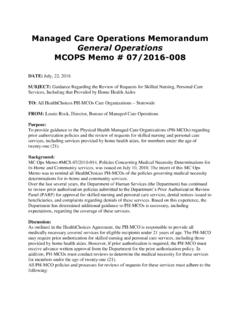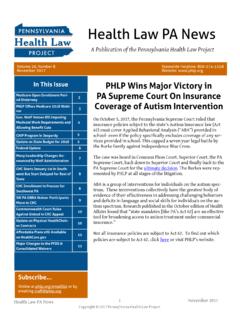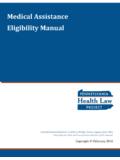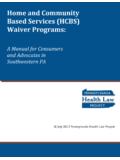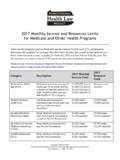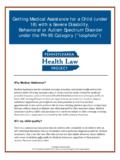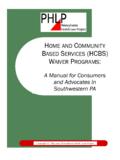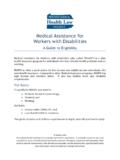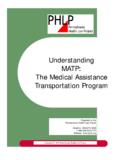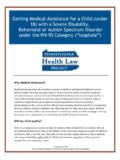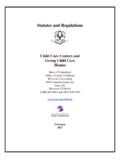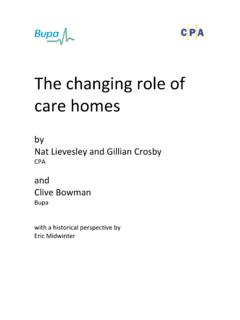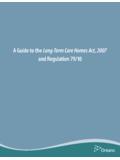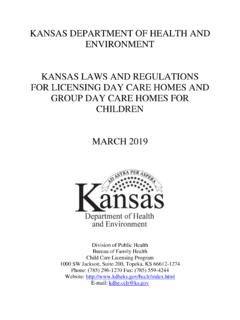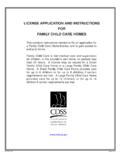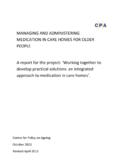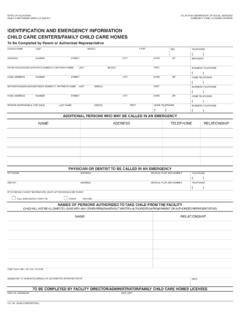Transcription of Personal Care Homes In Pennsylvania
1 Copyright 2007 Pennsylvania Health Law Project and North Penn Legal Services Personal care Homes In Pennsylvania : A Guide for Advocates . Prepared by: The Pennsylvania Health Law Project 1-800-274-3258 1-866-236-3610 TTY North Penn Legal Services 1-877-9-LEGAL-0 1 2 TABLE OF CONTENTS I. INTRODUCTION 3 II. WHAT IS A Personal care home ? 3 A. Regulation of Personal care Homes In Pennsylvania 4 B. Where PCHs Fit in the Range of Facilities Available to Consumers with Long Term care Needs 5 i. Nursing Facilities 5 ii. Boarding Homes 6 iii. Unlicensed Personal care Homes 6 1.
2 Legally Unlicensed PCHs 6 2. Illegally Unlicensed PCHs 6 iv. Domiciliary care Homes 7 III. Personal care home RULES AND REGULATIONS 7 A. Applicability of Regulations and How a home Becomes Licensed 8 B. Services available to Resident 9 C. Admission, Assessment of Needs, Support Plan, and Medical Evaluation 10 D. Written Agreement 11 E. Discharge Rights 12 F. Resident s rights 13 G. Financial Management 15 H. Additional Rights for SSI residents 16 I. Staff qualification/ training 16 J. Physical site 17 IV. HOW TO REPORT CONCERNS AND COMPLAINTS 19 A.
3 Where to get help. February 2007 3 I. INTRODUCTION This guide is made possible with the support of the Pennsylvania Legal Services IOLTA Special Projects Grant. This is a manual designed to help advocates in Northern Pennsylvania understand the laws and regulations that govern the approximately 1780 Personal care Homes in Pennsylvania , 247 of which are in the North Penn Legal Services service area, and 74 of which are in the 71 Counties selected for the project activities of this IOLTA Special Projects Grant. This guide is designed to help individuals understand who should live in Personal care Homes and how to advocate to insure that services are delivered and rights are honored.
4 Personal care Homes (PCHs) are an essential component of Pennsylvania 's continuum of long term care facilities. They house and service many of our most vulnerable citizens, including the elderly and persons with mental and physical disabilities. Like a boarding home , they provide a room (sometimes shared) and three meals a day. They differ from boarding Homes because they are required by law to provide safe, humane, comfortable, and supportive residential settings for aged, blind and disabled, and other dependent adults who require assistance beyond the basic necessities of food and shelter but who do not need hospitalization or skilled or intermediate nursing care .
5 2 Pennsylvania does not have a separate assisted living residence license, so any place calling itself an assisted living residence (ALR) must be licensed as a Personal care home . Presently, Pennsylvania law prohibits Personal care Homes from admitting or retaining residents whose care needs would qualify them for nursing facility II. WHAT IS A Personal care home ? Personal care Homes are residences that feed, house and provide Personal care services to four or more unrelated They are required to "provide safe, humane, comfortable and supportive residential settings for aged, blind and disabled, and other dependent adults who require assistance beyond the basic necessities of food and shelter but who do not need hospitalization or skilled or intermediate nursing care ".
6 5 Approximately, 20% of Personal care home residents are SSI recipients or have incomes equal to SSI recipients, who are low income, elderly and persons with disabilities. The Department of Public Welfare currently pays a supplemental payment of 1 Luzerne, Wyoming, Bradford, Susquehanna, Tioga, Sullivan and Monroe. 2 55 Pa Code 3 62 4 62 1001. 5 55 4 $ per month for each SSI participant living in a Personal care home . SSI recipients use their SSI check and the state supplement to pay the PCH. They are permitted to retain $60 per months for all of their Personal care needs. PCHs face a complex resident mix in terms of disability levels and need for protective oversight and services.
7 The majority of residents have some cognitive impairment. Residents are predominantly elderly with significant health problems and functional impairments. They may have urinary incontinence and/or be immobile. They may require oxygen or daily insulin or other injections to maintain their present health status. Residents with alcohol abuse problems and drug abuse problems add to the complex care problems that PCH staff face. The net result is that PCHs are responsible for housing, feeding and providing supportive services for many of Pennsylvania 's most vulnerable adults, many of whom are without family to help provide this care . The vast majority of Pennsylvania 's PCHs are for-profit.
8 Overall, Personal care Homes differ in their average monthly rates, housing options, staffing and included services (versus services triggering additional charges). PCHs can range in size from 4 beds to hundreds of beds. In the 7 North Pennsylvania Counties of Luzerne, Wyoming, Bradford, Susquehanna, Tioga, Sullivan and Monroe, there are 74 Personal care Homes that range in size from 6 to 177 licensed beds. Some PCHs have four residents sharing a room; others provide lavish private apartments. Rates can range from $1000 a month to over $5000 a month. Some PCHs offer room, meals, oversight and limited Personal care services, while others provide or arrange for skilled nursing services and therapies.
9 Even though PCHs are supposed to offer persons needing long-term care services a more residential setting than is found in a nursing facility, they are frequently more institutional than homelike. Unlike one s own home , many PCHs generally do not permit access to the kitchen to fix a snack or a cup of coffee. Likewise, many do not allow residents to bring their own furniture6 and often residents are not given the freedom to decide when to eat a meal or what to eat. A. Regulation of Personal care Homes In Pennsylvania As in other states, Pennsylvania began regulating the PCH industry after large numbers of boarding Homes began to provide housing, food and long-term care services to vulnerable adults, and after the discovery of seriously deficient conditions in these facilities, especially for poor residents.
10 DPW first obtained legislative authority to regulate boarding Homes in 1966, however, little was done and no regulations were enacted. Expos s about terrible conditions, deaths by fire, and other issues led Congress to pass the Keys Amendment in 1976, which sought to involve the states in ensuring that SSI income was not being used 6 Please note, the regulations governing Personal care Homes allow residents to bring their own furniture and Homes that forbid residents from doing so are violating the regulations. 5 to subsidize substandard and life-threatening facilities. In 1979, the General Assembly passed Act 105, which authorized DPW to promulgate regulations and establish a system for licensing and regulating Personal care boarding Homes .
